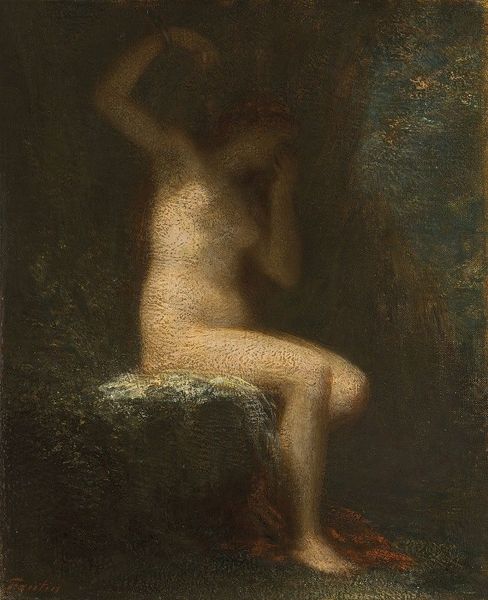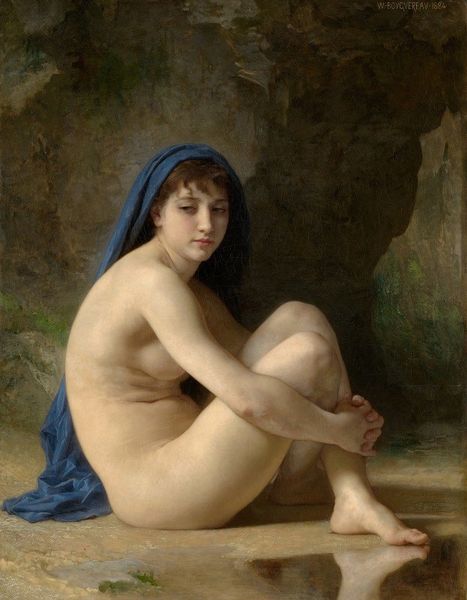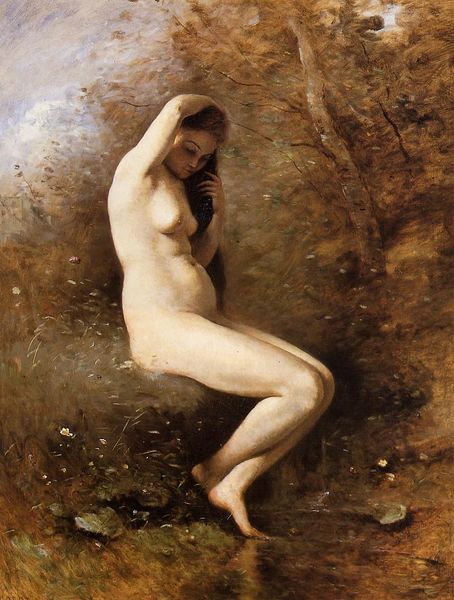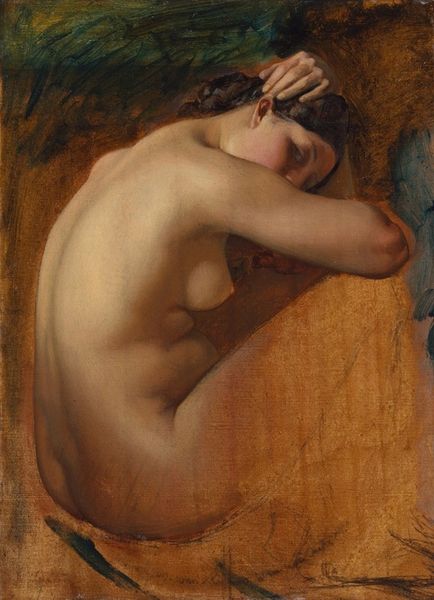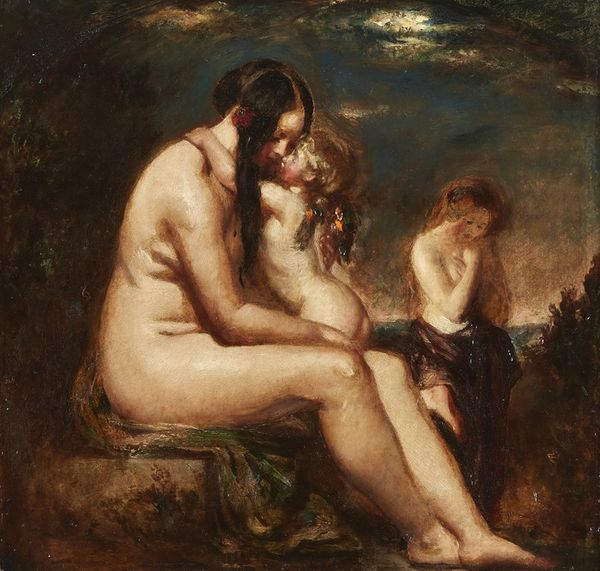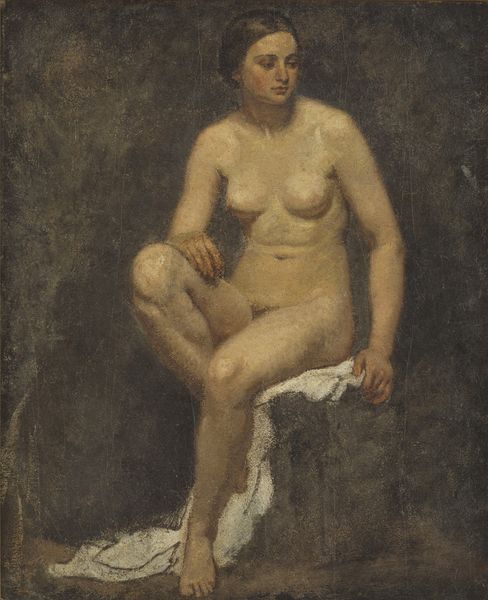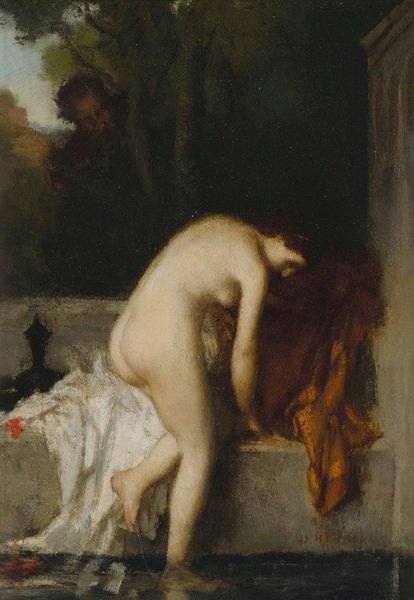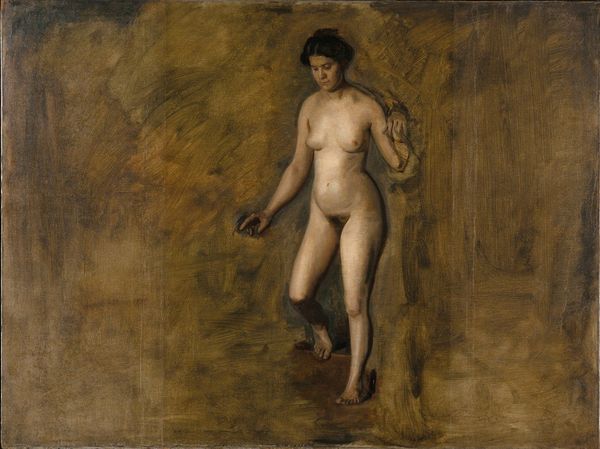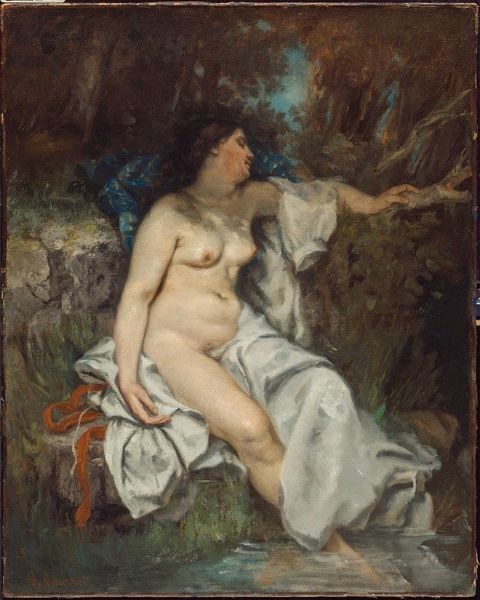
Dimensions: 63.5 cm (height) x 43 cm (width) (Netto)
Editor: This is "A Nymph. A Seated Female Model" by Julius Paulsen, painted in 1886 using oil. I'm immediately struck by how somber the painting feels, despite being a nude. The dark background really isolates the figure. How do you interpret this work? Curator: I see a potent commentary on the historical objectification of women. While on the surface it appears to be a classical nude, typical of the Romantic period, let’s consider the social context. This painting emerged during a time of intense debate about female agency and representation. Paulsen situates his nymph not in an idyllic, empowering landscape, but in shadow. Does this suggest the societal constraints placed on women? What does her downcast gaze signify to you? Editor: I hadn't thought of it that way. I suppose the darkness could represent the limitations placed on women at the time. And her gaze...perhaps she's not a willing subject? Curator: Exactly. The artist is engaging in a complex dialogue with his contemporaries regarding gender roles and societal expectations. The very title, "A Nymph. A Seated Female Model," seems to intentionally flatten the subject, reducing her to a type and a body on display. Considering this, how does it alter your understanding of the piece? Editor: It makes me question the intention behind it all. Is Paulsen simply perpetuating the objectification, or is he trying to critique it? Maybe it is a social commentary by illustrating such act? Curator: Precisely! And that’s where the power of art lies – in its capacity to spark these critical conversations. Understanding the historical and social context enables us to delve deeper into the artwork’s multifaceted layers. Editor: Wow, I'll never look at a "simple" nude painting the same way again. I see that understanding context and the historical period can drastically influence interpretation. Curator: Indeed. Art becomes infinitely richer when viewed through the lens of social and political discourse, challenging us to reconsider established narratives and power structures.
Comments
No comments
Be the first to comment and join the conversation on the ultimate creative platform.
